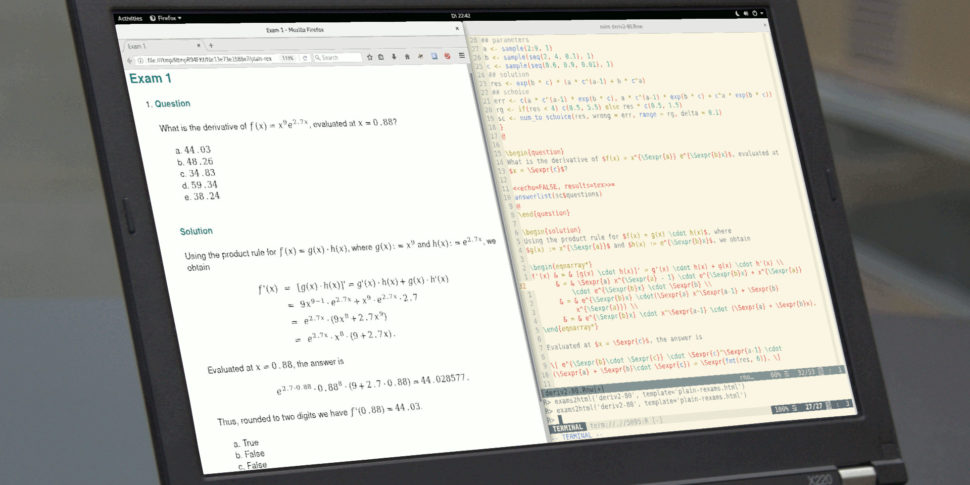
Templates with Random Elements
 Dynamic Exercises
Dynamic Exercises

schoice: Single-Choice
- Task: Select the only correct item out of a list of alternatives.
- Knowledge quiz: Arbitrary number of shuffled distractors (e.g., swisscapital).
- Numeric exercises: Distractors are random numbers (from a set/interval) and/or typical arithmetic mistakes (e.g., deriv2, tstat2).
- Shuffling (or subsampling) can be turned on or off.

mchoice: Multiple-Choice
- Task: Select all correct items out of a list of alternatives.
- Knowledge quiz: Arbitrary number of shuffled true or false statements (e.g., capitals, switzerland).
- Interpretations: Numeric statements that are approximately correct or clearly wrong (e.g., boxplots, scatterplot, ttest).
- Shuffling (or subsampling) can be turned on or off.


string: Character String
- Task: Enter the answer (exactly) as a character string.
- Knowledge quiz: Sample a word/phrase from a given vocabulary or list of question/answer pairs (e.g., function, countrycodes).
- Open-ended questions: Longer text answers that can be entered either as an essay (via a text editor) and/or via file upload and which have to be assessed by the examiner rather than automatically (e.g., essayreg).

cloze: Cloze (Combinations of the Above)
- Task: Solve a set of sub-exercises combining any of the above types.
- Numeric exercises: Several numeric quantities based on the same problem setting (e.g., confint2, dist2, fourfold, fourfold2).
- Statistics: Qualitative single- and multiple-choice questions plus numeric exercises based on randomly-generated data (e.g., boxhist, lm, lm2).
Blog
- Tutorial: Installing R/exams.
- Tutorial: First Steps.
- Tutorial: From Static to Numeric to Single-Choice Exercises in R/exams.
- YouTube videos:
Single-Choice and Multiple-Choice Quiz
Randomized Numeric Exercises
Turning Numeric into Single-Choice Exercises - Gallery: Exercise Templates.
- Blog archive.